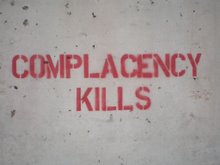As enraged Muslims take to the streets to protest cartoons depicting the prophet Muhammad, few seem to be aware that representations of Islam's last messenger have existed throughout history without causing alarm.
"There is nothing in the Quran that forbids imagery the way it is condemned in the Hebrew Bible," said John L. Esposito, university professor of religion and international studies at Georgetown University.
Although rare in the 1,400 years of Islamic art, visual representations of Muhammad were acceptable in certain periods. Today, his likenesses grace collections around the world, at New York's Metropolitan Museum of Art, the Edinburgh University Library, the British Museum and the Bibliotheque Nationale de France in Paris.
"To say that Islam is anti-imagery is to have a very limited understanding of the religion," said Linda Komaroff, curator of Islamic art at the Los Angeles County Museum of Art. "Islam isn't just one flavor or one interpretation"
The museum has an unusual depiction of him -- a verbal portrait. Called a hilyeler, meaning adornment, the verbal portrait was common during the Ottoman period and often could be found hanging in Muslim homes.
"They were the equivalent of the paintings of Jesus Christ or Virgin Mary one finds in Christian homes today," Komaroff said.
WHAT'S BEHIND MUSLIM CARTOON OUTRAGE / Muhammad's image: Revered prophet of Islam has been depicted in art for hundreds of years




















No comments:
Post a Comment